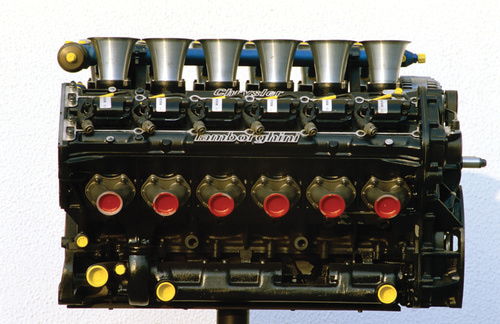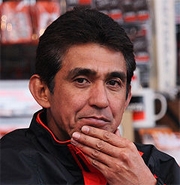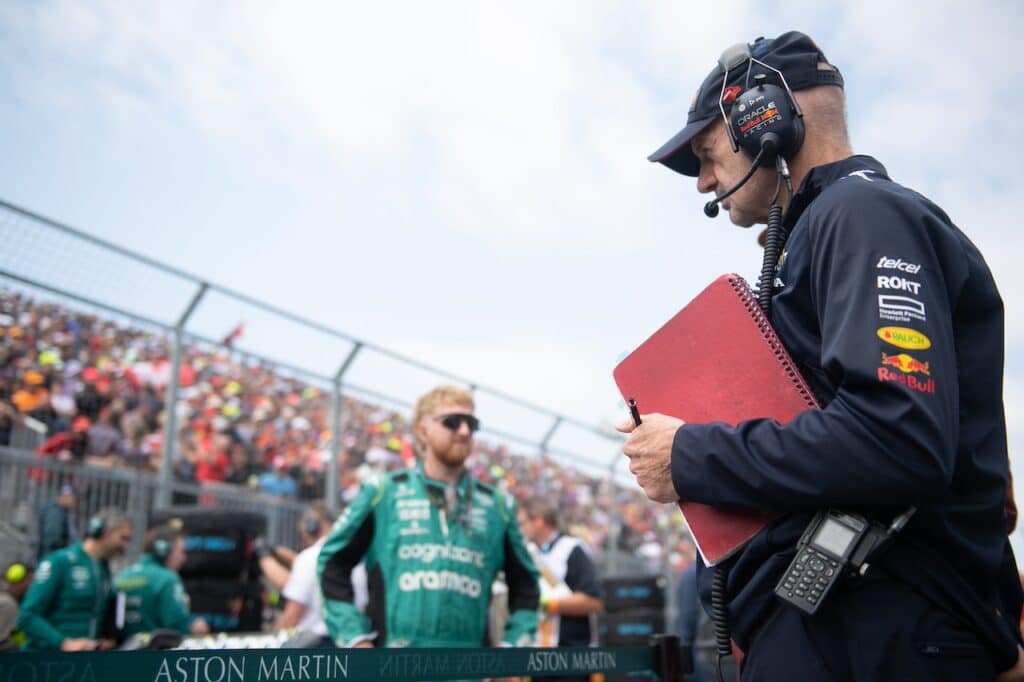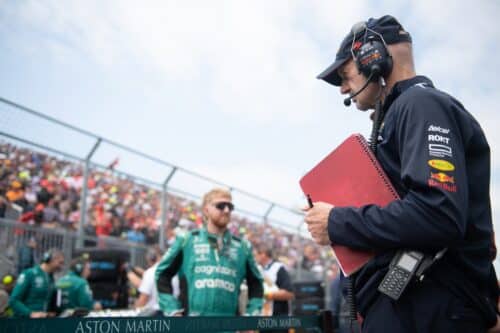The (brief) History of Lamborghini in Formula 1

Lamborghini did not debut in Formula 1 with its own official team: in the beginning it decided to remain only a supplier of engines for other teams already present in motor sport. The debut of a Lamborghini engine in Formula 1 dates back to 1989, when the Larrousse team chose the Italian brand to supply the V12 engines for the season. In 1987, in fact, the French team asked Mauro Forghieri to build a powerful engine for the Lola LC89. Having received permission from the American owners of Crysler, Forghieri immediately got to work and created a 12 liter V3.5, the maximum allowed by the Formula 1 regulations of those times. The engine was presented in April 1988, and debuted at the Brazilian GP in Rio de Janeiro, on 26 March 1989. The results were certainly not too brilliant, also given the lack of competitiveness of the team itself: the best placing was sixth place of Alliot at the Spanish GP.
The following year the Italian brand also supplied its V12 engines to Lotus, as well as to Larrousse, and achieved a total of fourteen world championship points during the championship, eleven with Larrousse and three with Lotus. Also this season came the best result for a Lamborghini engine: third place for Aguri Suzuki at the Japanese Grand Prix. Other notable results were a sixth place at the Monaco GP with Bernard, another sixth place at the subsequent Canadian GP with Warwick, on Lotus, a fourth and a sixth place at the British GP for Bernard and Suzuki respectively, another fifth and sixth at the Hungarian GP and a sixth place at the Spanish GP. The results were certainly not excellent, but there was a good level of competitiveness and a good margin for improvement.
It was in 1991 that Lamborghini competed with an official team, the Modena team. The idea of a team firmly linked to Lamborghini had been born a few years earlier when a Mexican tycoon named Fernando Gonzales Luna had agreed with the Sant'Agata engineers for a complete car to debut in the Formula 1 championship. A few months earlier However, after the debut, Luna disappears from circulation, and Lamborghini finds itself with Mauro Forghieri's project in hand, and despite several economic problems, the Crysler managers decide to continue with the new team. The name Modena team was chosen, and the two drivers were Nicola Larini and Eric van der Poele. The project does not come to fruition: the team does not obtain any points throughout the season, qualifying for the race six times, but only crossing the finish line four times, and obtaining as its best result a seventh place with Nicola Larini in the first Grand Prix in the USA at Phoneix. The setback is too great to continue with a completely private project, and so the Modena team withdraws from Formula 1 competition after just a year of existence, although Lamborghini already has a project for the following year.
In 1992, in fact, Lamborghini returned to supply engines to Minardi and Larrousse, however obtaining very few points: two sixth places respectively for Bertrand Gachot in Monaco and Christian Fittipaldi in Japan. In 1993 the situation was more or less the same as the previous year, with only two points placings for a Lamborghini engine: fifth place in Imola for Alliot's Larrousse, and sixth place in Monza for the other Comas Larrousse. Three points in total, after an entire season.
During this last year, however, there was a rapprochement between the Sant'Agata V12s and McLaren, orphaned by Honda. Crysler, which had financed the debut in Formula 1, in fact, wanted to evaluate the true potential of the Lamborghini engines, which on a car like the Larrousse did not provide significant data. So numerous Lamborghini V12s were sent to Ron Dennis, who in the meantime had Senna's car modified so that he could fit this type of engine. There were two tests, one at Silverstone and one at Estoril, and only the latter was officially public. Senna judged the engine thus: “It's a really good starting point, because it needs more power and then it's not so sophisticated. I'm sure it will be an element to our advantage for next year." Some even hoped that the Lamborghini V12 would take over from the Ford-Cosworth engine in the final races of the season, but that didn't happen. At the end of the season, while the V12 Lamborghini slowly changed its name to the V12 Crysler, McLaren announced an official contract with Peugeot for the supply of engines for the 1994 vintage, leaving the Americans who had invested in that project high and dry. Everything then ended, and both Crysler and Lamborghini gave up on the top flight just five years after their debut.
Matteo Bramati
if you want to always be updated on our news
Follow us here

![F1 | Vettel at the Imola GP: he will drive Ayrton Senna's McLaren MP4/8[VIDEO]](https://f1grandprix.motorionline.com/wp-content/uploads/2024/05/vettel-a-imola-guidera-mclaren-senna-2024-1024x682.jpg)
![F1 | Vettel at the Imola GP: he will drive Ayrton Senna's McLaren MP4/8[VIDEO]](https://f1grandprix.motorionline.com/wp-content/uploads/2024/05/vettel-a-imola-guidera-mclaren-senna-2024-500x333.jpg)
![F1 | Ferrari: here is the new livery for the Miami GP [PHOTO AND VIDEO]](https://f1grandprix.motorionline.com/wp-content/uploads/2024/05/livree-ferrari-gp-miami-2024-1024x691.jpg)
![F1 | Ferrari: here is the new livery for the Miami GP [PHOTO AND VIDEO]](https://f1grandprix.motorionline.com/wp-content/uploads/2024/05/livree-ferrari-gp-miami-2024-500x338.jpg)











